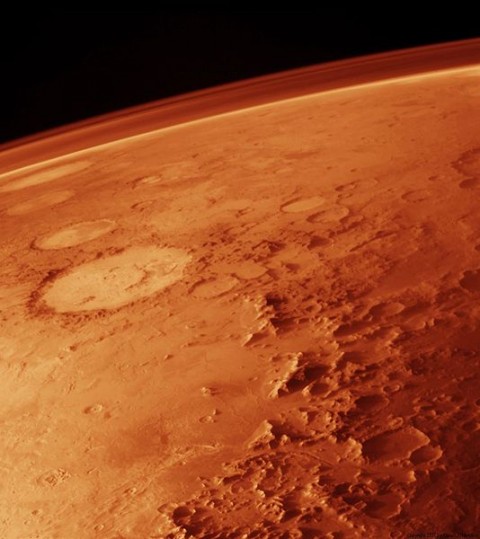
The atmosphere of Mars, which is very thin compared to Earth’s, is visible along the edge of the planet. (Credit: Viking Orbiter Raw Image Archive, Wikimedia Commons)
By analysing impact craters on the Martian surface, researchers have worked out that the atmosphere on Mars 3.6 billion years ago was still too thin to support life. The researchers estimate that the atmosphere at the time would only be about 150 times thicker than today.
The authors suggest that if Mars had a thick atmosphere, it was likely only briefly and temporarily, and could have been driven by heat and gases from volcanic eruptions and/or external impacts.
The thicker a planet’s atmosphere, the less likely it is for small meteors to survive long enough to generate an impact crater. The craters studied are in an area of Mars known as Aeolis Dorsa.
Original research paper published in the journal Nature Geoscience on April 13, 2014.
Names and affiliations of selected authors

